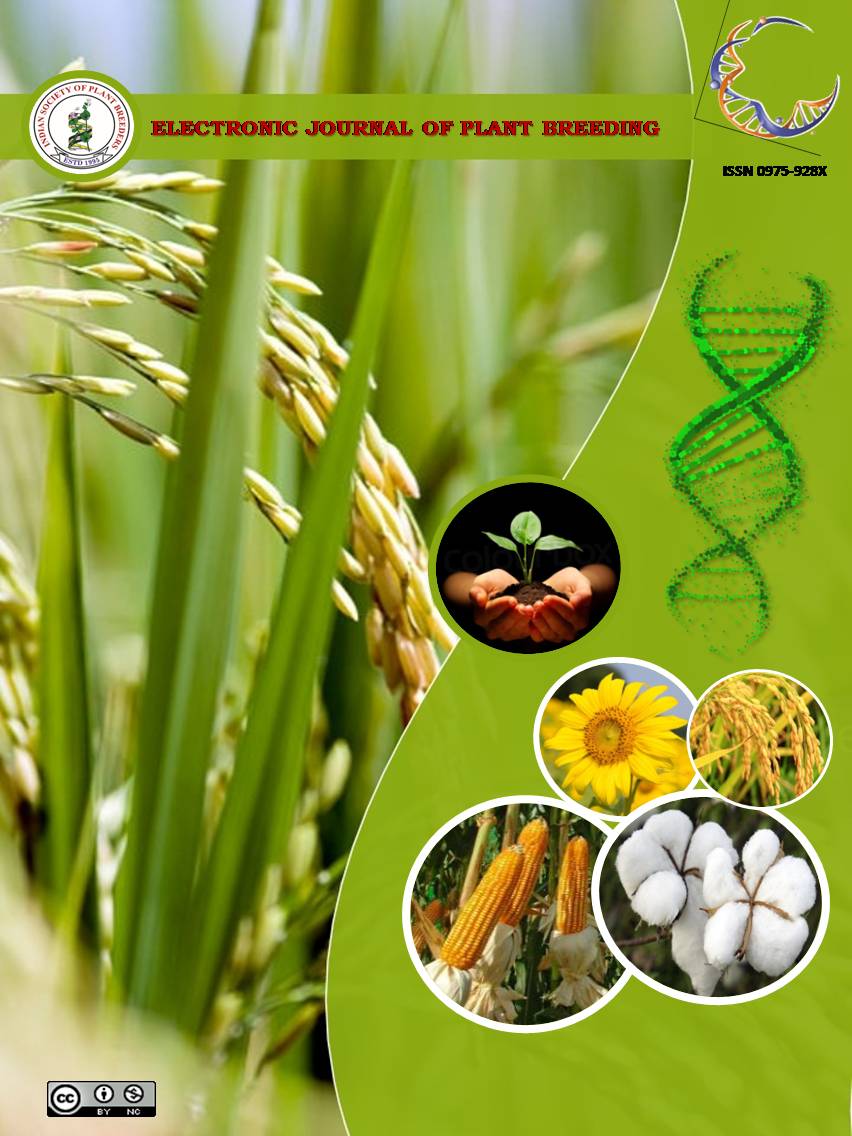Study of chlorophyll deficit types through induced mutagenesis in blackgram (Vigna mungo L. Hepper)
Abstract
The investigation was carried out to study the phenotypic reaction of seeds of CO 6 blackgram variety exposed to Gamma rays doses at 200 Gy, 300 Gy, 400 Gy and combination treatments with 200 Gy + 20 mM EMS, 200 Gy + 30 mM EMS, 300 Gy + 20 mM EMS, 300 Gy + 30 mM EMS, 400 Gy + 20 mM EMS, 400 Gy +30 mM EMS. It was observed that different mutation frequencies and span of mutation spectra were induced under the action of different concentrations of the applied mutagens in the M2 generation of blackgram. Five different types of chlorophyll mutants namely albino, xantha, chlorina, viridis, and maculata type were observed in the M2 populations and chlorophyll mutation frequency was calculated on a plant population basis. In Gamma treated population, the frequency of xantha mutants was high followed by chlorina whereas in combination treatments of Gamma ray + EMS, the highest frequency was observed in chlorina followed by xanthan mutants. Maculata type of chlorophyll mutant was observed in the treatment 200 Gy + 20 mM EMS. The combination treatments of Gamma ray + EMS were found to be more efficient than gamma rays alone in inducing chlorophyll mutations. The frequency of chlorophyll mutations (2.51%) was high in the combination treatment 400 Gy+ 30 mM EMS.

It is certified that:
- The corresponding author is fully responsible for any disputes arising due to the publication of his/her manuscript.
- The article has been seen by all the authors who are satisfied with its form and content.
- The sequence of names of authors in the by-line is as per their relative contribution to this experiment, giving due credit to all scientists who made notable contribution to it.
- All the authors fully understand that inclusion of any other co-authors or exclusion of any co-authors is not possible once the article has been submitted to the journal.
- The corresponding author takes full responsibility for this article.
- The address of the organization where the research was conducted is given.
- The article is exclusive for this journal, and the results reported here have not been sent (and will not be sent during its consideration by this journal) for publication in any other journal.
- Authors agree to abide by the objective comments of referees and do agree to modify the article into a short note as per the recommendation, for publication in the Electronic Journal of Plant Breeding.
- If published in Electronic Journal of Plant Breeding, the copyright of this article would vest with the Indian Society of Plant Breeders, who will have the right to enter into any agreement with any organization in India or abroad engaged in reprography, photocopying, storage and dissemination of information contained in it, and neither we nor our legal heirs will have any claims on royalty.


